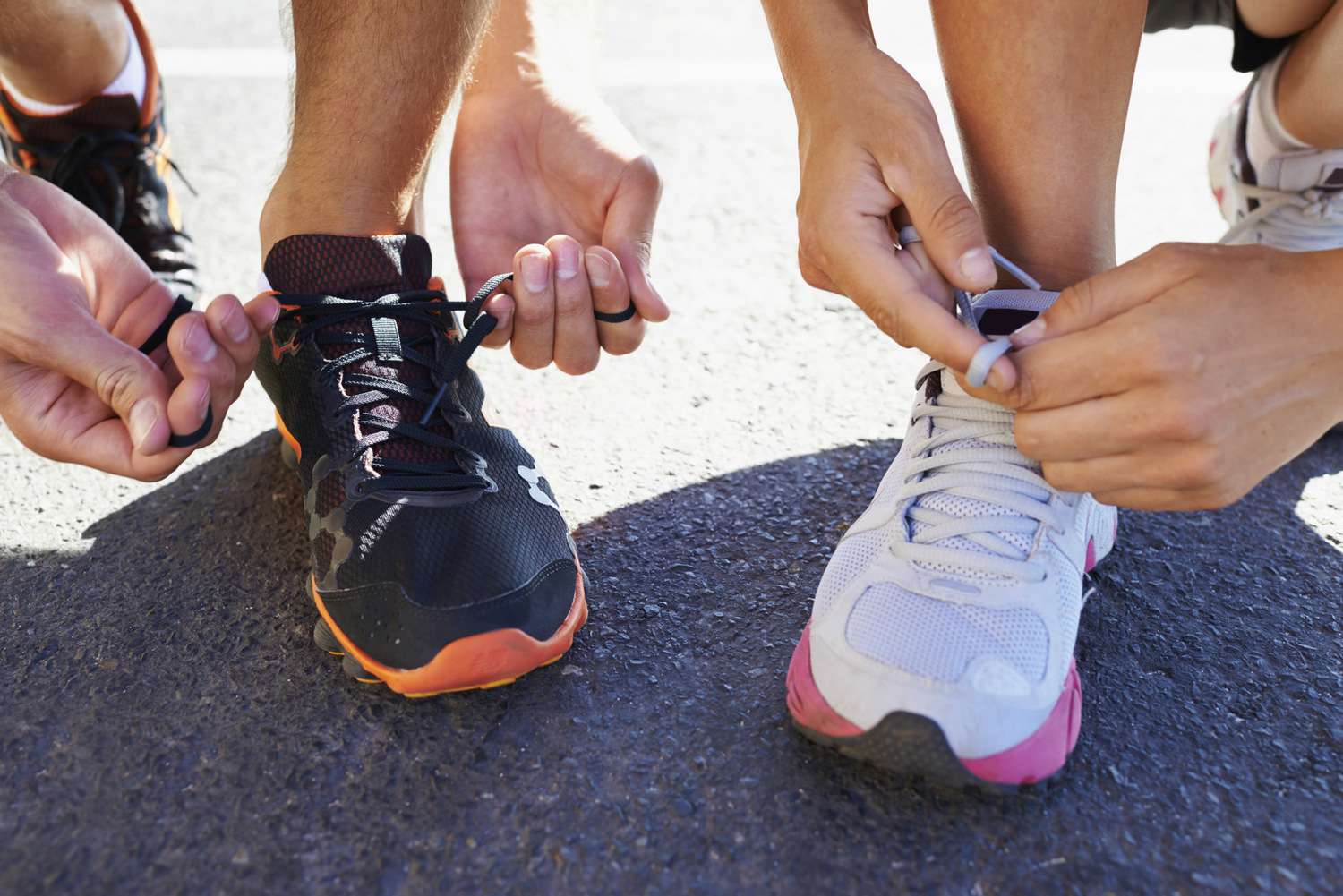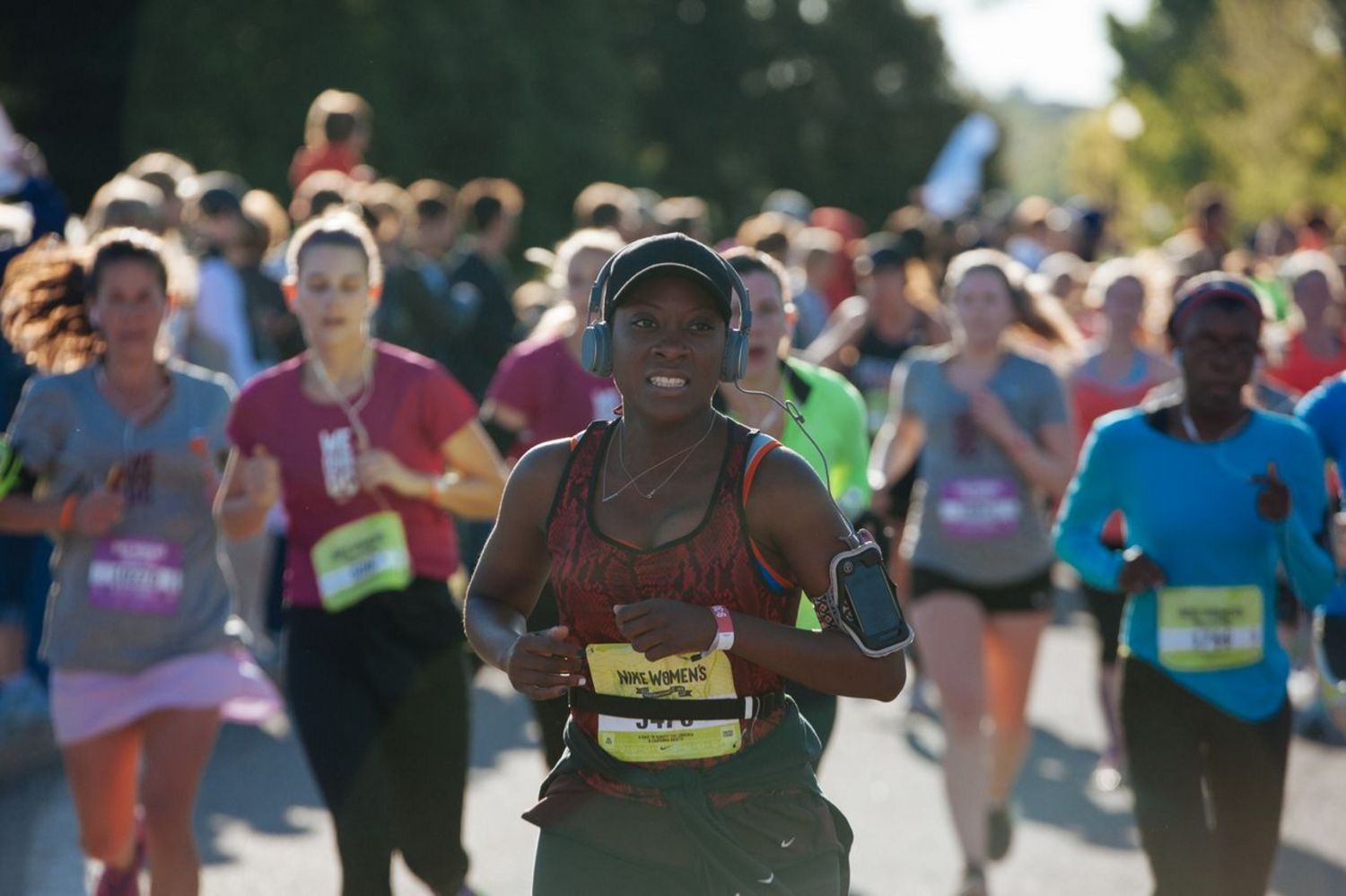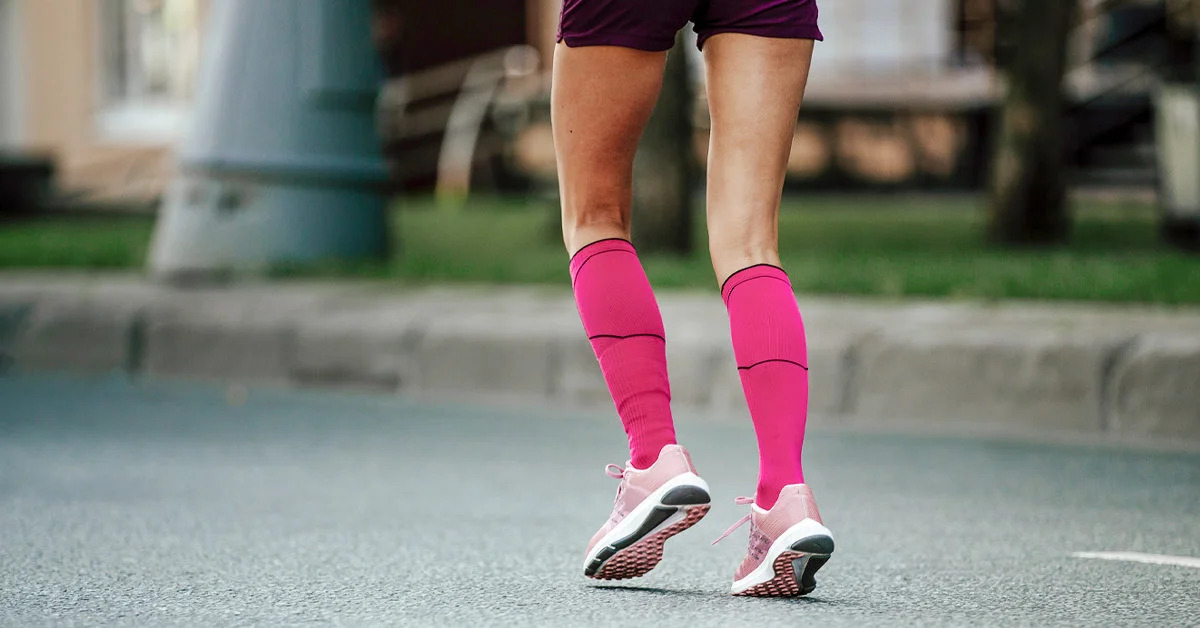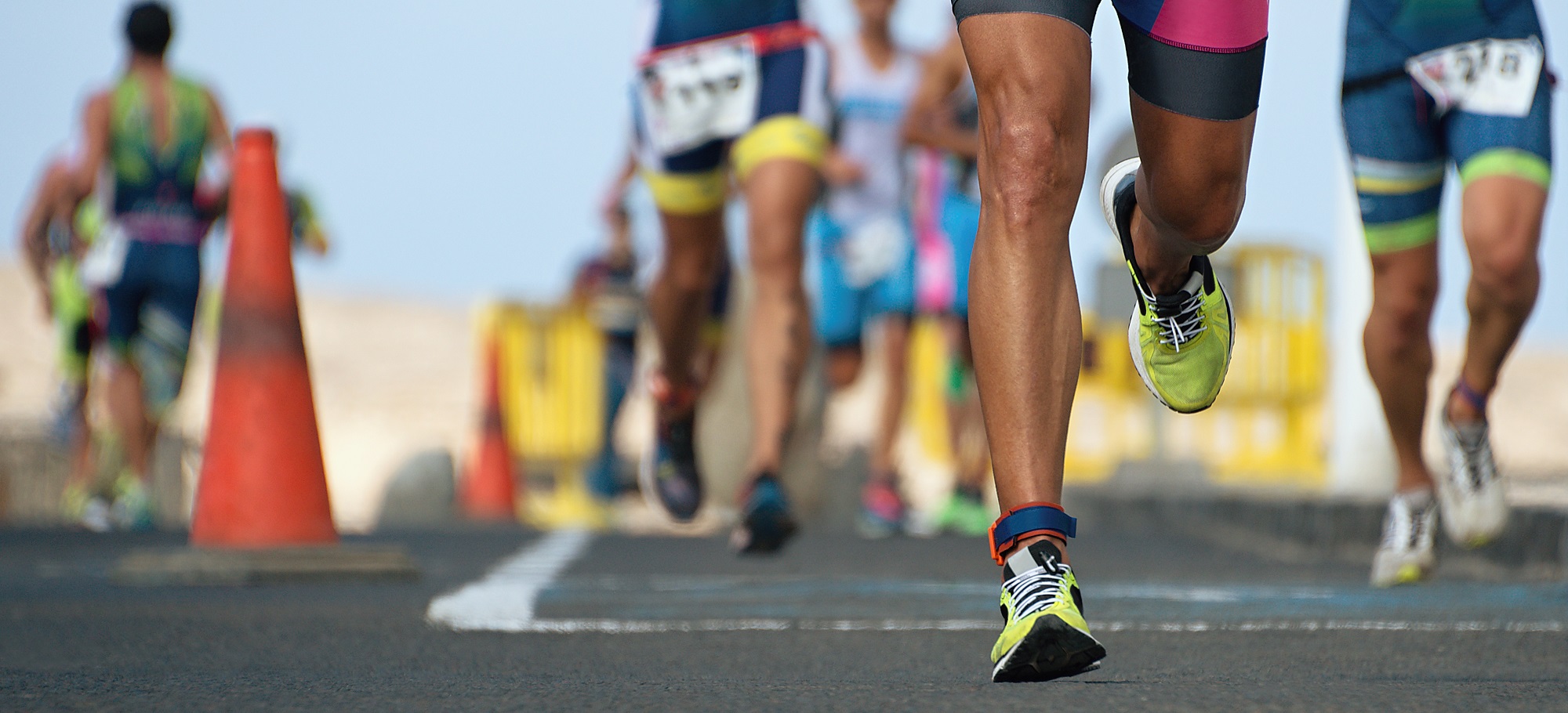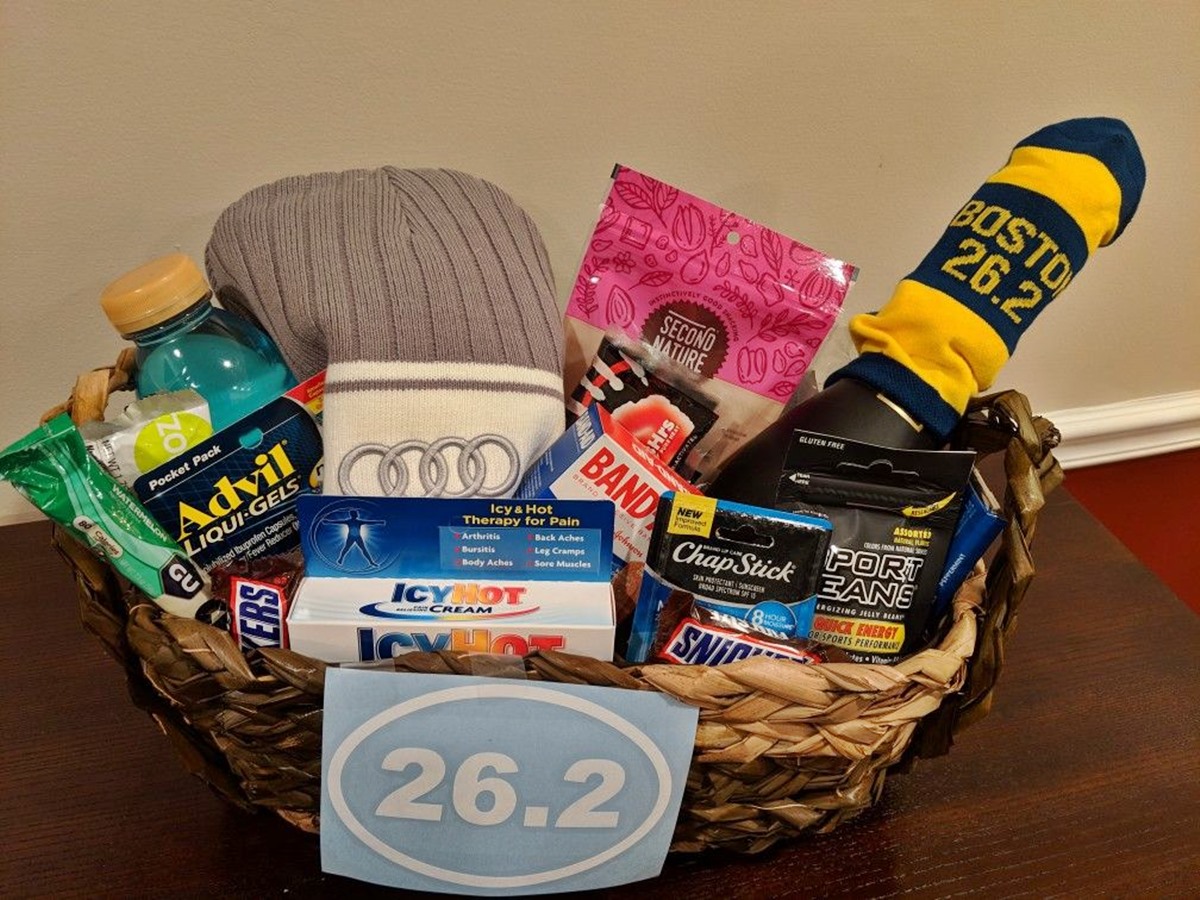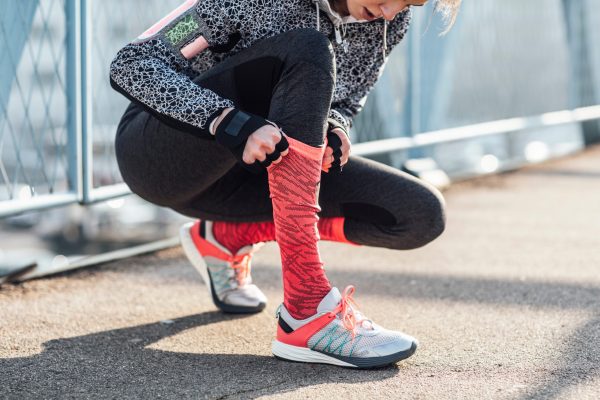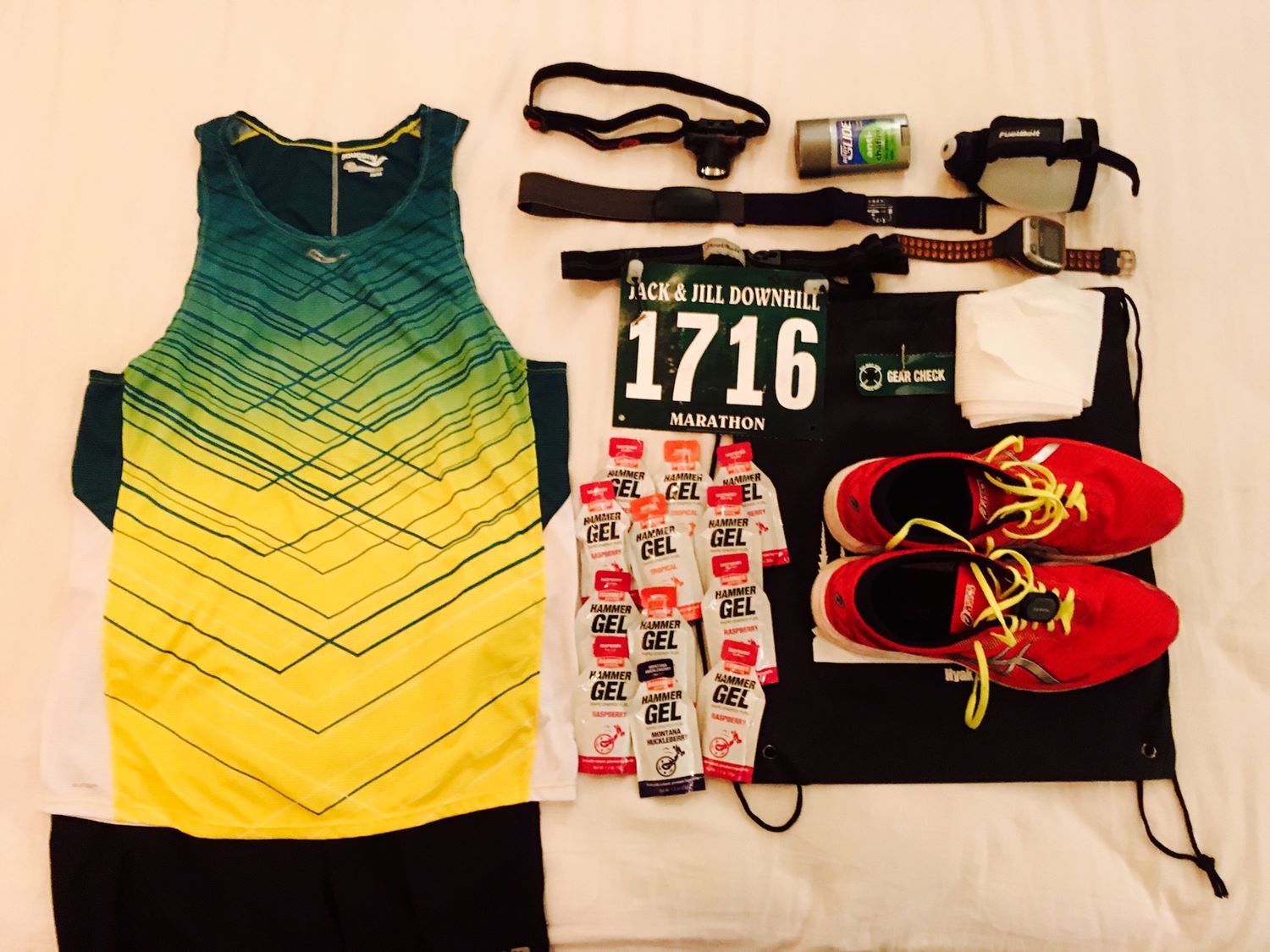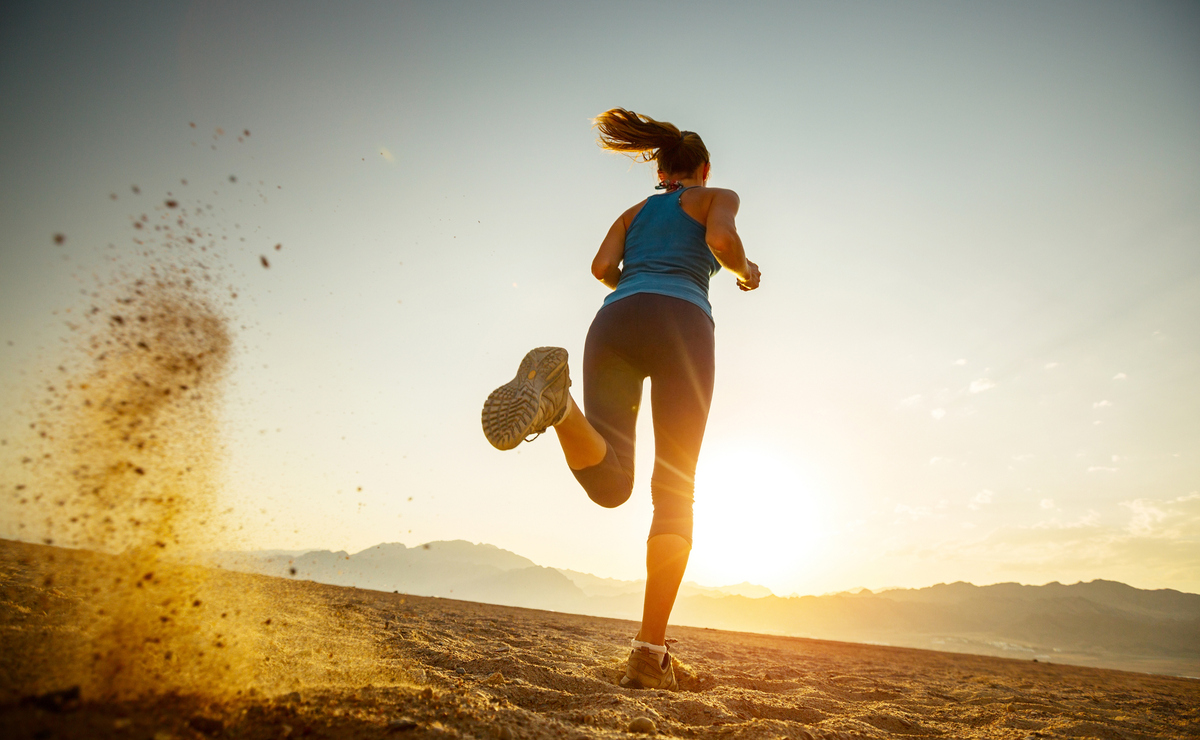Home>Misc>Featured>How To Prevent Blisters On Foot When Running Half Marathon
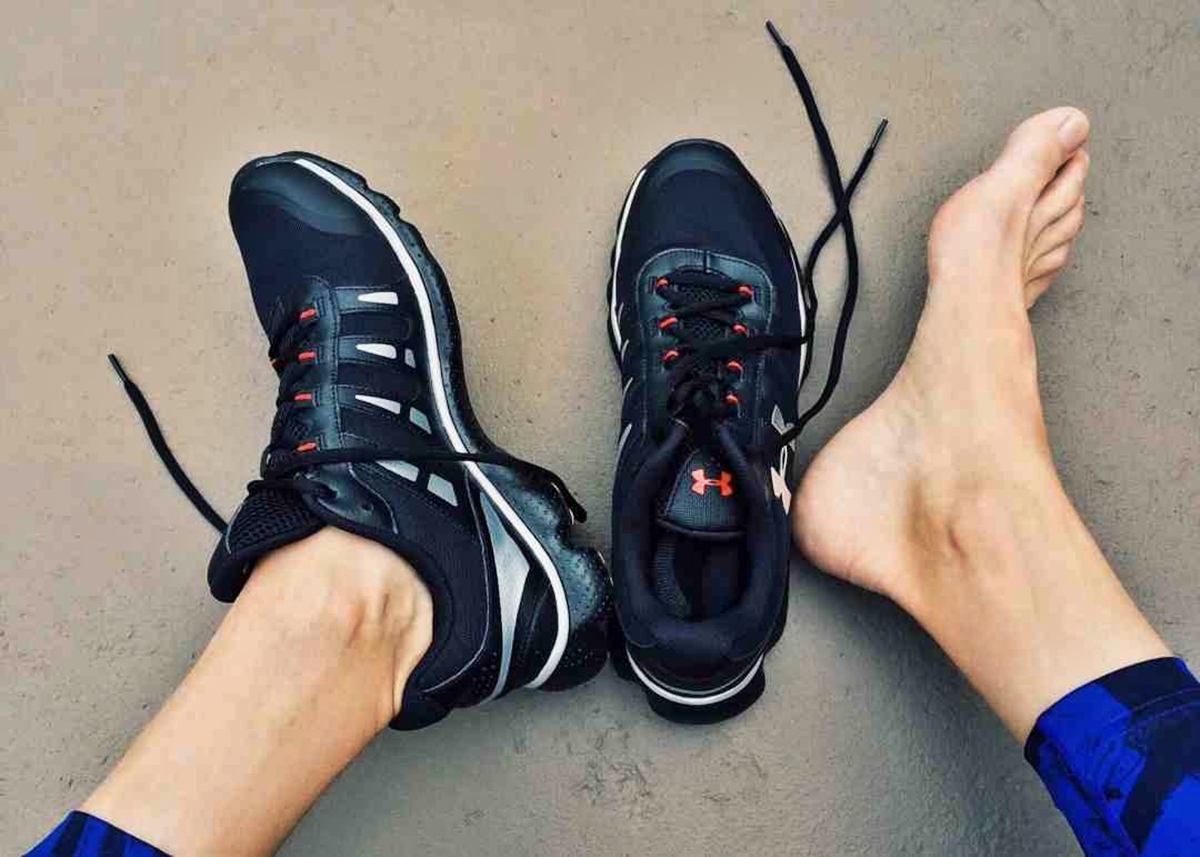

Featured
How To Prevent Blisters On Foot When Running Half Marathon
Modified: May 22, 2024
Learn how to prevent blisters on your feet while running a half marathon with these featured tips. Eliminate discomfort and keep your feet in top condition.
Introduction
Welcome to the world of distance running, where the thrill of pushing your physical and mental limits is unparalleled. As a runner, you know that preparing for a half marathon takes dedication and perseverance. However, one thing that can put a halt to your progress and make your journey uncomfortable is the dreaded blister.
Blisters can quickly transform a blissful experience into a painful one. These fluid-filled pockets form due to friction and pressure on the skin, especially during long-distance running. When left unaddressed, blisters can become a major detriment to your performance and even lead to infection.
Fortunately, there are steps you can take to prevent blisters and keep your feet happy and healthy throughout your training and race. In this article, we will delve into the essential strategies to help you avoid blisters when running a half marathon.
By understanding the importance of preventing blisters, choosing the right footwear and socks, practicing proper foot hygiene, and implementing various techniques to reduce friction and impact, you will be well-equipped to enjoy a blister-free running experience.
So, lace up your running shoes and let’s explore how you can keep blisters at bay and maximize your joy in the half marathon journey.
Importance of Preventing Blisters
When it comes to running a half marathon, taking steps to prevent blisters is crucial for several reasons. First and foremost, blisters can be incredibly painful and can significantly impact your performance. The discomfort caused by blisters can distract you from maintaining proper form, leading to decreased efficiency and a higher risk of injury.
Blisters can also extend your recovery time. If you develop a blister during your race, it can take days or even weeks to fully heal. This means you’ll have to put your training on hold, disrupting your progress and potentially derailing your race goals.
Furthermore, untreated blisters can become infected. When the skin is damaged and there is a break in its barrier, bacteria can easily enter and cause an infection. Not only can this be painful, but it can also lead to more serious complications if left untreated. By prioritizing blister prevention, you can reduce the risk of infection and ensure a smoother and more enjoyable race experience.
Preventing blisters is not just about avoiding discomfort and injury; it is also about preserving the joy and excitement of your half marathon journey. The last thing you want is to associate your race with pain and frustration. By taking proactive measures to prevent blisters, you can focus on the thrill of crossing the finish line and achieving your goals.
Now that we understand the significance of blister prevention let’s dive into the practical steps you can take to keep your feet blister-free during your half marathon training and race.
Choosing the Right Footwear
When it comes to preventing blisters, selecting the right footwear is paramount. Ill-fitting shoes can increase friction and pressure on your feet, leading to blisters. Here are some guidelines to help you choose the right running shoes:
- Get properly fitted: Visit a specialized running store where the staff can assess your foot size and arch type. This will ensure that you find the right shoe with the appropriate level of support and cushioning.
- Consider your foot shape: Different shoes are designed for different foot shapes. If you have wide feet, look for shoes with a wider toe box to prevent rubbing. If you have narrow feet, opt for shoes that offer a snug fit without being too tight.
- Look at the material: Choose shoes made of breathable materials that wick away moisture. Moisture can increase friction and contribute to blister formation. Additionally, consider shoes with seamless construction to minimize potential rubbing points.
- Test different brands and models: It’s important to try on several brands and models to find the perfect fit. What works for one runner may not work for another, so experiment until you find the footwear that feels most comfortable for you.
- Replace worn-out shoes: Running in worn-out shoes can increase the likelihood of blisters. As a general rule of thumb, replace your running shoes every 300-500 miles or when you notice signs of wear and tear.
Remember, finding the right pair of running shoes may require some trial and error. Don’t be afraid to seek advice from experts and invest time in testing different options. Properly fitted and comfortable shoes will go a long way in preventing blisters and enhancing your overall running experience.
Socks: The First Line of Defense
When it comes to blister prevention, your choice of socks is just as important as choosing the right footwear. Socks act as a barrier between your feet and the shoes, reducing friction and moisture buildup. Here are some tips for selecting the best socks:
- Material matters: Opt for socks made of moisture-wicking materials, such as merino wool or synthetic blends. These fabrics help keep your feet dry by drawing sweat away from the skin.
- Avoid cotton: Cotton socks tend to retain moisture, increasing the risk of blisters. Moisture can soften the skin, making it more susceptible to friction. Choose socks specifically designed for running that offer moisture management properties.
- Consider cushioning: Look for socks with adequate cushioning in areas prone to blister formation, such as the heel and ball of the foot. Cushioning provides an extra layer of protection and helps absorb impact during your runs.
- Seamless design: Seek out socks with a seamless toe construction, as seams can rub against the skin and cause friction. Seamless socks minimize the risk of blister formation and provide a more comfortable fit.
- Proper fit: Make sure your socks fit snugly but not too tight. Socks that are too loose can bunch up and cause friction, while socks that are too tight can restrict circulation and increase the risk of blisters. Consider the thickness of the socks based on your preference and the weather conditions.
It’s essential to invest in high-quality running socks that prioritize comfort and moisture management. Experiment with different sock brands and styles to find the ones that feel most comfortable for your feet. Remember to always wear clean, dry socks for each run to prevent moisture buildup and reduce the likelihood of blisters.
Lubricating Your Feet
Lubricating your feet is another effective strategy to prevent blisters during your half marathon. By reducing friction between your skin and socks or shoes, you can minimize the chances of developing painful blisters. Here’s how you can effectively lubricate your feet:
- Petroleum jelly: Applying a thin layer of petroleum jelly to areas prone to blister formation, such as the heels and toes, can help reduce friction. Petroleum jelly acts as a barrier, creating a smooth surface that allows your feet to slide more easily within your socks and shoes.
- Sports-specific lubricants: There are also specially designed lubricants available for runners that are formulated to reduce friction and prevent blisters. Look for products that are long-lasting, sweat-resistant, and gentle on the skin.
- Experiment with different products: Not all lubricants work the same for every runner, so it’s important to find the one that works best for you. Test different options during your training runs to see which product provides the most effective lubrication and minimizes friction.
- Apply before every run: To maximize the benefits, make sure to apply the lubricant to your feet before every run, especially focusing on areas prone to friction and blister formation.
Keep in mind that while lubricating your feet is an effective preventive measure, it’s important to find the right amount that works for you. Applying too much lubricant can cause your feet to feel slippery, which may lead to discomfort or instability while running. Start with a small amount and gradually increase if needed.
Remember, lubrication works best in combination with other blister prevention strategies such as wearing the right socks, properly fitting shoes, and practicing good foot hygiene. By incorporating lubrication into your pre-run routine, you’ll create a protective barrier that reduces friction and keeps your feet blister-free during your half marathon.
Proper Foot Hygiene
Maintaining proper foot hygiene is essential for preventing blisters during your half marathon training and race. By keeping your feet clean, dry, and well-cared for, you can minimize the risk of moisture buildup, bacterial infection, and friction. Here are some foot hygiene practices to incorporate into your routine:
- Wash your feet regularly: Clean your feet daily with mild soap and warm water. Pay special attention to the areas between your toes, where sweat and bacteria can accumulate. Gently pat your feet dry with a clean towel afterward.
- Keep your feet dry: Moisture on your feet can increase friction and make them more vulnerable to blister formation. After washing your feet, thoroughly dry them, paying extra attention to the areas between your toes. If you have a tendency to sweat excessively, consider using moisture-wicking socks or foot powders to keep your feet dry during your runs.
- Trim your toenails properly: Long toenails can rub against your shoes and cause friction, increasing the risk of blisters. Regularly trim your toenails straight across and avoid cutting them too short to prevent ingrown toenails.
- Avoid going barefoot in public areas: Walking barefoot in communal areas such as gyms or locker rooms can expose your feet to bacteria and fungi that can cause infections. Always wear shower shoes or flip flops in these environments to protect your feet.
- Moisturize your feet: Keeping your skin moisturized can help prevent dryness and cracking, which can lead to blisters. Use a moisturizer specifically formulated for feet and massage it into your feet to keep them soft and supple.
- Inspect your feet regularly: Take the time to examine your feet for any signs of redness, irritation, or blisters. Catching any issues early on can help prevent them from worsening or becoming infected.
By incorporating these foot hygiene practices into your daily routine, you’ll create a foundation of cleanliness and care that promotes healthy and blister-free feet.
Preventing Friction with Bandages or Tape
When it comes to blister prevention, using bandages or tape to reduce friction can be highly effective. These simple yet powerful tools can provide an extra layer of protection and support for your feet during your half marathon. Here’s how you can use bandages or tape to prevent friction and blisters:
- Identify problem areas: Take note of areas on your feet that are prone to blister formation or areas that tend to experience excessive friction. Common trouble spots include the heels, toes, and areas where your shoes may rub against the skin.
- Apply padding: To prevent friction, you can use adhesive moleskin or gel padding to create a protective barrier between your skin and shoes. Cut the padding into the desired shape and place it over the problem areas before putting on your socks and shoes.
- Use blister-specific bandages: There are special blister-specific bandages available that provide cushioning and protect existing blisters. These bandages can help reduce pain and promote faster healing. Apply them directly over the blister, ensuring a secure and snug fit.
- Tape problem areas: Another effective technique is to use athletic or medical tape to cover areas prone to rubbing or blister formation. Wrap the tape firmly but not too tight to avoid restricting blood flow. This will create a barrier that reduces friction and prevents blisters from forming.
- Experiment with different techniques: Every runner is unique, so it’s important to experiment with different bandaging and taping methods to find the ones that work best for you. You may need to adjust the positioning or type of bandage or tape based on your specific needs and foot shape.
- Ensure proper placement: Take the time to apply the bandages or tape properly. Smooth out any wrinkles or folds, and make sure they are securely in place. Improperly placed bandages or tape may cause additional friction or come loose during your run.
Using bandages or tape can significantly reduce friction and prevent blisters from forming. It’s important to note that if you have any existing blisters, it’s best to seek medical advice on whether to cover them or let them heal naturally.
Remember to remove any bandages or tape gently after your run to avoid irritating the skin. Proper bandaging techniques combined with other blister prevention strategies will help keep your feet protected and comfortable throughout your half marathon journey.
Techniques for Reducing Impact on Feet
Reducing the impact on your feet is crucial for minimizing the risk of blisters during your half marathon. The repetitive strain and shock absorption involved in running long distances can put a significant amount of pressure on your feet. Here are some techniques to help reduce the impact and protect your feet:
- Work on your running form: Improving your running form can help reduce the impact on your feet. Focus on maintaining an upright posture, landing softly on your midfoot, and avoiding overstriding. Consulting with a running coach or physiotherapist can provide valuable insights and guidance on proper running mechanics.
- Gradually increase mileage: Gradually increasing your mileage allows your feet to adapt and become stronger over time. By giving your feet and muscles adequate rest and recovery, you can minimize the risk of overuse injuries and blisters.
- Incorporate cross-training: Engaging in cross-training activities such as swimming, cycling, or strength training can help strengthen the muscles in your feet and legs. Stronger muscles provide better support and shock absorption, reducing the impact on your feet during running.
- Focus on proper footwear and cushioning: Ensure that your running shoes have adequate cushioning and support to absorb shock. Consider adding insoles or orthotic inserts to provide additional cushioning and support, especially if you have high arches or specific foot conditions.
- Mix up your surfaces: Varying your running surfaces can help alleviate the constant impact on your feet. Incorporate runs on grass, trails, or softer surfaces to reduce the strain on your feet and provide some relief from the repetitive movements on pavement.
- Listen to your body: Pay attention to any signs of discomfort, pain, or fatigue in your feet. Pushing through pain can lead to further injury or blister formation. If you experience any persistent issues, it’s important to seek medical advice to address the root cause.
Implementing these techniques will not only reduce the impact on your feet but also enhance your overall running performance. Remember that every runner is unique, so take the time to find what works best for you and your feet. By prioritizing the health and well-being of your feet, you’ll be better equipped to prevent blisters and enjoy a successful half marathon.
Listening to Your Body
Listening to your body is an essential aspect of preventing blisters during your half marathon training and race. Your body knows best, and paying attention to its cues can help you avoid injury and discomfort. Here are some key points to consider when it comes to listening to your body:
- Recognize the warning signs: Be mindful of any discomfort, pain, or hot spots on your feet during your runs. These can be early warning signs of potential blister formation. Taking immediate action, such as adjusting your socks or applying lubrication, can prevent blisters from worsening.
- Rest and recover: Rest days are just as important as your training days. Give your feet and body time to recover and heal between intense workouts. Overtraining can increase the risk of blisters and other injuries.
- Modify your training plan: If you’re experiencing persistent pain or discomfort in your feet, be flexible with your training plan. It’s better to adjust your workouts or take a break to prevent further damage or aggravation.
- Seek professional guidance: If you’re consistently experiencing foot pain or if the discomfort is affecting your training, it’s wise to consult a healthcare professional, such as a podiatrist or sports medicine specialist. They can assess your condition and provide appropriate guidance to prevent blisters and other foot-related issues.
- Hydrate and nourish your body: Proper hydration and nutrition play a crucial role in foot health. Staying well-hydrated and fueling your body with balanced meals can promote better skin health and prevent dryness that can lead to blister formation.
- Don’t ignore discomfort: If you feel any rubbing, discomfort, or irritation, address it promptly. Ignoring these signs can lead to more significant issues down the line. Make necessary adjustments, such as changing your socks or tightening your laces, to alleviate discomfort and reduce the risk of blisters.
Remember, everyone’s body is different, and what works for one person may not work for another. Pay attention to how your feet and body respond to different strategies and make adjustments accordingly. By listening to your body and taking appropriate action, you can prevent blisters and ensure a safe and enjoyable half marathon experience.
Post-Race Foot Care
After completing a half marathon, it’s essential to give your feet the care and attention they deserve. Proper post-race foot care can help prevent blisters from worsening and promote faster recovery. Here are some tips to take care of your feet after the race:
- Remove your shoes and socks: As soon as you cross the finish line, take off your shoes and socks to allow your feet to breathe and air out. This can help reduce moisture buildup and minimize the risk of blisters becoming worse.
- Inspect for blisters: Take the time to carefully examine your feet for any blisters or areas of irritation. If you notice any newly formed blisters, it’s important to properly clean and dress them to prevent infection.
- Cleanse your feet: Wash your feet with mild soap and warm water to remove any sweat, dirt, or debris. Gently pat them dry with a clean towel, taking care not to rub or irritate any blisters.
- Treat blisters appropriately: If you have blisters, clean them with antiseptic solution or mild soap and water. Apply a blister-specific bandage or use sterile gauze and adhesive tape to protect the blistered area. Avoid popping the blisters unless advised by a healthcare professional.
- Elevate your feet: Elevating your feet above heart level can help reduce swelling and promote better blood circulation. Find a comfortable position and rest your feet on a pillow or cushion.
- Apply cold compress: If your feet are swollen or experiencing discomfort, applying a cold compress or an ice pack wrapped in a thin cloth can help reduce inflammation and soothe your feet. Remember to limit the application to 15-20 minutes at a time.
- Moisturize your feet: After cleansing and drying your feet, apply a moisturizer specifically formulated for feet. This will help keep your skin hydrated and prevent dryness and cracking that can lead to blisters.
- Rest and recover: Give your feet ample time to rest and recover after the race. Avoid excessive walking or engaging in strenuous activities for the next couple of days to allow your feet to heal.
Remember, every runner’s recovery process is different. Pay attention to any persistent pain or signs of infection and seek medical advice if needed. Taking proper care of your feet post-race will ensure a smooth recovery and help you prepare for future running endeavors.
Conclusion
Preventing blisters on your feet when running a half marathon is essential for a successful and enjoyable race. By implementing the strategies outlined in this article, you can minimize the risk of blisters and keep your feet in optimal condition throughout your training and on race day.
Start by choosing the right footwear that fits properly and provides adequate support. Pair your shoes with moisture-wicking socks that reduce friction and keep your feet dry. Additionally, lubricate your feet with petroleum jelly or specialized lubricants to further reduce friction during your runs.
Maintaining proper foot hygiene is key to preventing blisters. Keep your feet clean, dry, and moisturized, and pay attention to any signs of discomfort or irritation. Consider using bandages, padding, or tape to reduce friction in problem areas, and remember to listen to your body and adjust your training as needed.
After the race, give your feet the care they deserve. Cleanse your feet, inspect and treat any blisters, and allow your feet to rest and recover. Post-race foot care is just as important as pre-race preparation.
Remember, every runner is unique, and it may take some trial and error to find the strategies that work best for you. Pay attention to your body, seek professional advice when necessary, and be proactive in preventing blisters.
By implementing these strategies and taking care of your feet, you can confidently tackle your half marathon and cross the finish line with happy, blister-free feet.
